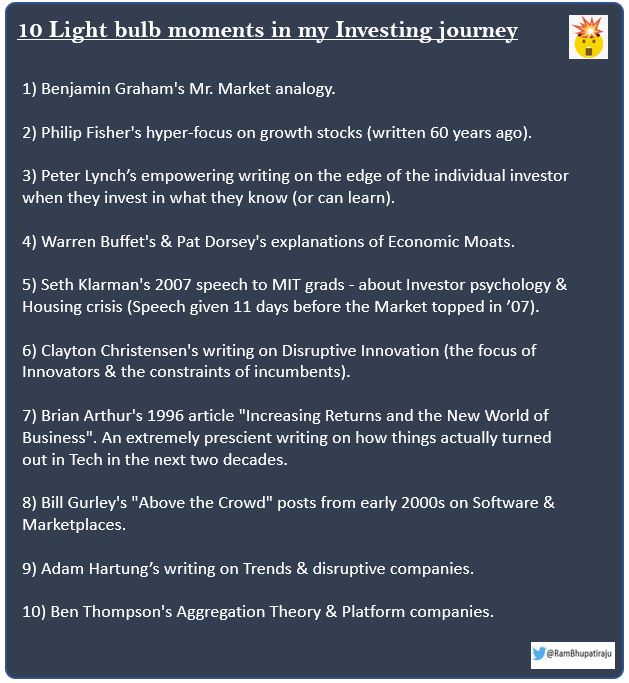
"Digging for Value" - Great website for Investing Book summaries. 📚👏
cc: @dmuthuk @Gautam__Baid
Some of my fav ones in the thread below.⬇️⬇️
diggingforvalue.com/category/book-…
cc: @dmuthuk @Gautam__Baid
Some of my fav ones in the thread below.⬇️⬇️
diggingforvalue.com/category/book-…
Classics
✔️ Ben Graham's "The Intelligent Investor"
diggingforvalue.com/book-summary/t…
✔️ Philip Fisher's "Common Stocks & Uncommon Profits"
diggingforvalue.com/book-summary/c…
✔️ Peter Lynch's "Beating The Street"
diggingforvalue.com/book-summary/b…
✔️ H. Marks "Most Important Thing"
diggingforvalue.com/book-summary/t…
✔️ Ben Graham's "The Intelligent Investor"
diggingforvalue.com/book-summary/t…
✔️ Philip Fisher's "Common Stocks & Uncommon Profits"
diggingforvalue.com/book-summary/c…
✔️ Peter Lynch's "Beating The Street"
diggingforvalue.com/book-summary/b…
✔️ H. Marks "Most Important Thing"
diggingforvalue.com/book-summary/t…
Personal/Business Biographies
✔️ "Snowball" about Warren Buffett
diggingforvalue.com/book-summary/w…
✔️ "Titan" about John D Rockefeller
diggingforvalue.com/book-summary/t…
✔️ "The Everything Store" about Bezos/Amazon
diggingforvalue.com/book-summary/t…
✔️ "Snowball" about Warren Buffett
diggingforvalue.com/book-summary/w…
✔️ "Titan" about John D Rockefeller
diggingforvalue.com/book-summary/t…
✔️ "The Everything Store" about Bezos/Amazon
diggingforvalue.com/book-summary/t…
More timely stuff about speculation & bubbles/manias.
✔️ Irrational Exuberance
diggingforvalue.com/book-summary/i…
✔️ Reminiscences of a Stock Operator
diggingforvalue.com/book-summary/r…
✔️ Manias, Panics & Crashes
diggingforvalue.com/book-summary/m…
✔️ Extraordinary Popular Delusions
diggingforvalue.com/book-summary/e…
✔️ Irrational Exuberance
diggingforvalue.com/book-summary/i…
✔️ Reminiscences of a Stock Operator
diggingforvalue.com/book-summary/r…
✔️ Manias, Panics & Crashes
diggingforvalue.com/book-summary/m…
✔️ Extraordinary Popular Delusions
diggingforvalue.com/book-summary/e…
• • •
Missing some Tweet in this thread? You can try to
force a refresh








